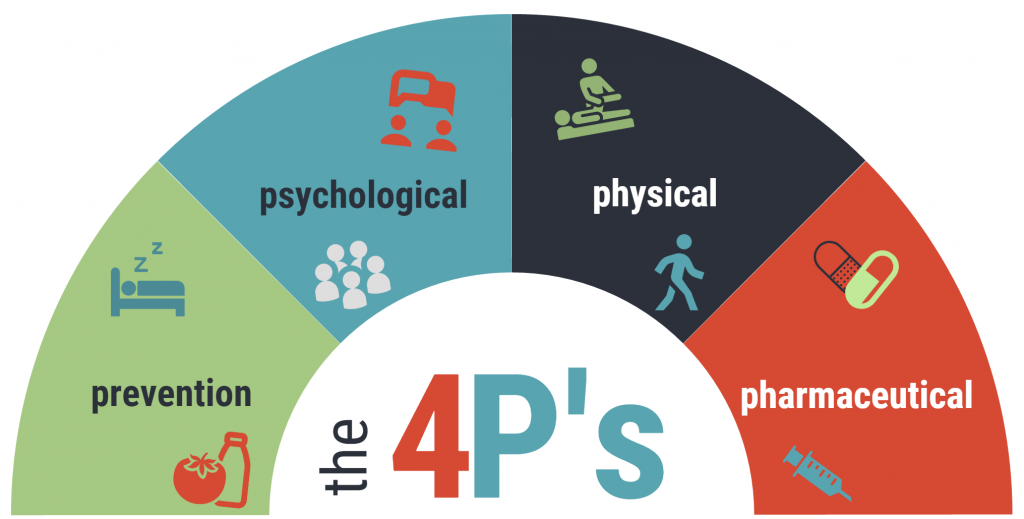Pain is a complex phenomenon that can range from mild to severe, to downright debilitating. While there are many types of pain that will usually go away by themselves, chronic pain can be incapacitating and often require the intervention of pain management doctors to manage.
What pain management doctors do
A pain management specialist is a medical doctor who is specially trained in the evaluation, diagnosis, treatment and prevention of pain – an area otherwise referred to as pain medicine.
Pain management doctors often serve as consultants to other health care providers and physicians. They play a key role in coordinating additional patient care such as psychological therapy, physical therapy and rehabilitation programs in order to provide patients with a comprehensive pain management plan enriched with a multidisciplinary approach to treating pain.
As such, they need to be equipped with in-depth knowledge of the physiology of pain, plus the special ability to evaluate patients with difficult pain problems, skills to perform procedures and understanding of specialized medical tests for diagnosing pain.

A pain doctor may work in a variety of settings, but mostly in a pain management clinic.
Types of pain
Pain can occur in numerous individual forms or as a combination of different types. Even though pain is a broad spectrum of disorders arising from an equally wide array of reasons that include injury, surgery, nerve damage, disease and metabolic problems like diabetes; it is still possible to classify it into various types.
The common classifications of pain include:
- Chronic pain. This is the kind of pain that lingers for extended periods of time, often until a proper interventional pain management is sought. Many types of pain can also be chronic.
- Nerve pain. This is the type of pain you’re likely to experience when nerve fibers get damaged.
- Acute pain. A relatively sharp and severe kind of pain that often lasts a moment, such as pain from soft tissue damage as in the case of a paper cut or sprained ankle.
- Psychogenic pain. Pain from depression, anxiety, and other emotive problems.
- Musculoskeletal pain. Pain that affects the ligaments and tendons, muscles and bones.
- Abdominal pain. The discomfort commonly associated with digestive problems.
- Joint pain. Pain from the inflammation of joints or injury affecting any ligament(s), tendons or bursae surrounding the joint.
Choosing your pain management specialist: what to look for
Different types of pain may require comprehensive pain management or complex treatment plans and specialized interventional techniques.
The pain management clinic must have the needed equipment to serve you properly. More importantly though; the specialist must have more training to not only understand pain but also know how to use modern equipment to diagnose and treat pain effectively.
- Training
Successful comprehensive pain management practice starts with the right education. The specialist must go through the basic college training as well as obtain additional training in pain management which occurs after graduating from medical school. It doesn’t hurt to ask the doctor about their training.
- Certification
Different countries have different certifications for their pain management doctors. A quick local search will tell you about the accreditation body in your country so that you know exactly what kind of certification to expect with your pain management doctor.
In the US for instance, a practitioner will have a board certification in pain management by the American Board of Anesthesiology, The American Board of Neurology or the American Board of Physical Medicine and Rehabilitation and The American Board of Psychiatry.
All said and done, you’ll want to make sure that your pain management doctor has the requisite experience with your specific pain condition. Ask them about the types of treatments they offer to see if this is what you’re looking for before settling on treatment.
- Try an acupressure mat
An acupressure mat has been demonstrated in scientific studies to be beneficial for pain relief, improving sleep and other positive impacts in your well-being.
The acupressure mat applies a subtle form of acupuncture with the plastic points that one lays on. Acupuncture is a healing technique from Traditional Chinese medicine that dates back 3,000 years. In 1997, the U.S. National Institutes of Health (NIH) publicized the safety of accupunture and the benefits of using it for a wide range of health condition.
References
Pain Management: Treatment Overview
Types of Pain, Alist by WebMD
The specialty of chronic pain management





